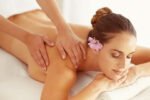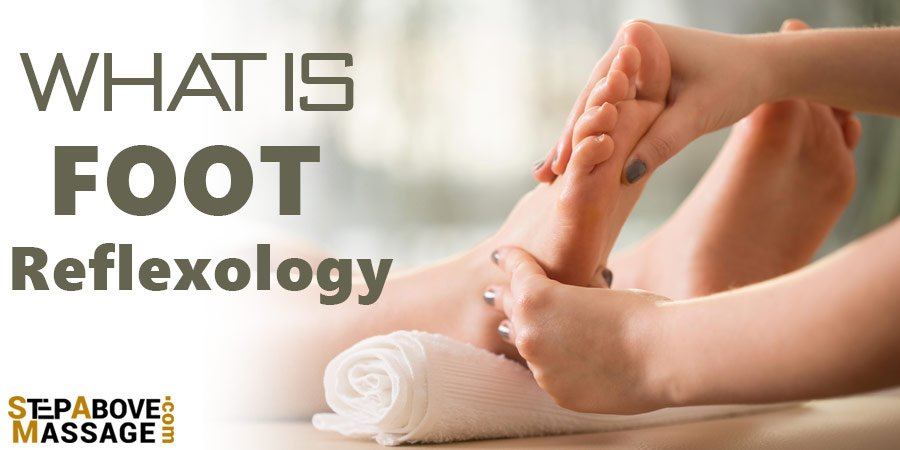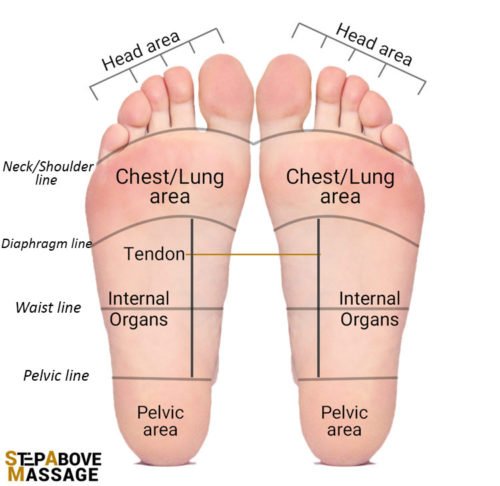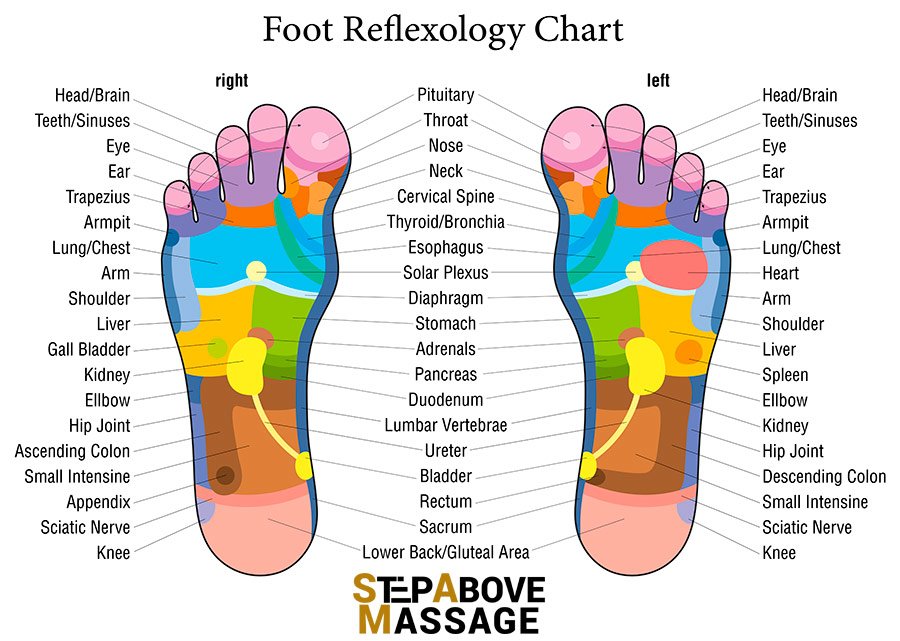I want to share you how foot reflexology massage made me a better person… my life, like others, is full of many stresses every day and as the days went by I felt like “something is wrong with my body, it’s changing in a bad way” and yes! That stress we all experience every day has effects on our body. It brings us to sickness.
I started thinking; I couldn’t change my stressful world, so I should find a way to get rid of the stress-filled me, to release the tension, to have a healthy mind and body now and then! Asking google, I found out the answer; that was “foot massage”, the best way that could help me in many aspects without spending much time and money. As a result, taking the time to calm my body became a must.
Everybody knows that a massage can easily really help us relax, especially after a long day of walking and standing up around. But what is the most relaxing massage in these cases? Extremely, I suggest you a foot massage and reflexology! Have you heard anything about them? Are they really useful? How can it help us? What’s the relation between foot massage and reflexology? Let’s see the answers. I bet, you will not lose this massage by the end of this paper.
What is a foot massage
A foot massage is a kind of massage which focuses on your feet. The origin of this treatment goes back to more than 3,000 years ago from china. They have traditionally used foot massage to notice and treat all sicknesses. Nowadays, massage therapists also use a foot massage for relaxation and to calm sore sole and arches. Foot massage starts by massaging the top parts of the feet plus the toe sole and heel.
what are foot massage benefits
A foot massage is a great way to relax after a long day. It releases the muscles and tendons besides it removes the tension. Foot massages can also help to cure problems like stress, insomnia and headaches. You can do deeper massage moves on the ankles, soles, and pressure points to release any tension and create a positive massage experience for the person which is called reflexology.
What is reflexology massage
Reflexology is a type of massage with the aim of preventing diseases and curing the problems with the inner organs. It is a complementary treatment which works with ears, hands, legs, and face.
There is a belief in Chinese medicine that pushing certain areas of the foot can cure diseases. This action is called foot reflexology. They believe that ‘chi’ energy flows through your body in particular pathways. Chi or qi (pronounced “Chee”), means the vital energy. If there is a problem in your body or a person feels stressed, they call it ‘blockage of chi’. This blockage causes an imbalance in the body that leads to illness. Reflexology has a role in keeping chi flowing through the body to be balanced.
In Chinese medicine, the foot is the window to the body. There is a map of the reflex zones or points in the ears, hands, and feet that Reflexologists use to determine where they should apply pressure.
It is believed that the touch sends the chi energy flowing through your body until it reaches the area in need of healing. Foot massage therapists or Reflexologists assist the treatment and your whole health containing mental, spiritual emotional and physical.
Foot reflexology massage has been also used by ancient Egyptians probably for these goals. drawings have been found in the caves which show the usage of foot massage for treatment. So, there is something special in it that they were using. Why not we try it?!
What is the difference between foot massage and reflexology
Foot massage may feel the same as foot reflexology massage, but the difference is reflexologist works on points to heal a disease, but a foot massage generally relaxes the body by working on releasing the muscles, tendons, and fascia. Reflexology works on the basis of a body map, but foot massage does not.

foot reflexology body map
How a foot reflexology massage works
Scientific research showed that Reflexology boosts the natural healing mechanisms of the body by stimulating nearly 7500 nerve endings connected to the skin. There are 10 zones and all reflex zones begin in the foot, and then go to the head through the vital parts. Every reflex zone is a pressure point placed on the tip of both hands and feet. Reflex zones are directly connected to the nervous system. So, putting pressure on different parts of the feet from soles to sides, different muscles and vital organs can be touched.
When the pressure is applied, a message is sent to the central nervous system and an entire relaxation sensation happens which can help organs function at their best.
It is usually recommended that the best way is to be done in 5 weeks as a healing process once a week. Sometimes the results after foot reflexology massage are immediate and demonstrative, and sometimes the improvement takes three or more sessions. Consider the condition you have. For example, if you have a chronic, long term, condition like arthritis, it will take much longer to bring the body into balance.
Reflexology Zones
In this method, the body divided into 10 sections. Exact duplicate of these sections reflected on feet, hands, and ears. As you see on the pictures we have an exact duplicate of every part of the body on feet, ears, and hands.
We can work on reflexology points with pressing every point on feet, hands, and ears.
Reflexology lines
Reflexology lines are for horizontal lines that divided bottom of the feet and hands into 5 different sections.
Neck and shoulder line
The first line is neck and shoulder line which is below the toes, which correspond to any area above the neck (brain, eyes, ears, sinuses, hypothalamus, head, pituitary gland, mastoid, and neck).
Pelvic line
This line is located at the top of the heels. Any area above this line is related to internal organs (small intestine, colon, duodenum, ureter, and bladder).
The area under this line is related to the pelvic area (pelvic and sciatica).
The inner side of the feet is related to a spine. Bottom of the feet is related to the sacrum. As we go up on the side of the feet, areas are related to the lumbar area, then thoracic area, and the cervical area which attached to big toe.
Diaphragm line
This line is located below the bowl of the feet. Any area located between the neck/shoulder line and Diaphragm line corresponds chest and lung area (shoulders, heart, long, Diaphragm, esophagus, trachea, thyroid, and parathyroid).
Waistline
This line is located in the middle of the Feet arch. Any area above this line corresponds to the abdominal cavity (stomach, pancreas, kidneys, adrenal gland, spleen, and solar plexus).
What happens during a foot reflexology massage
Foot reflexology takes between 15 to 30 minutes. Foot reflexology massage, the massage therapist will massage the reflex zones by manipulating and rubbing which relaxes you. It is applied to specific points on your feet that relate to where you may be suffering issues.
You should take off your socks and shoes, and sit in a comfortable chair. The massage therapist will sit in front of you on a bench, stool, or on the floor while he or she works on the feet.
Do not forget to tell him or her what suffers you these days and what brought you there! Some therapists may ask about your sickness, and work on the special reflex zones in your feet to help them. Some others may just rub and massage the foot from the heels to toes to reduce any tension.
Maybe Reflexologist uses lotion or oil, and instruments including dowels, balls, and brushes.
Choose a therapist has certification and is educated at a recognized institution.
Benefits of feet reflexology massage and how can feet reflexology massage help me
Some ancient practices and a group of medical research suggest that massaging specific points on the foot can treat conditions affecting entirely different parts of your body. Although it’s not effective for all medical conditions, but a great deal of research shows that it is effective at:
- Reducing and managing:
- Pain specially after breast surgery
- Anxiety in people under treatment or medical testing
- Pain after foot and ankle injuries
- Muscle soreness
- The effects of depression and anxiety
- Pain from flat feet and having a normal arch
- The PMS symptoms like sadness, insomnia, mood swings, headaches, irritability; during the period
- Effects of edema in pregnant women, (edema is swelling because of fluid retention in the ankles and feet)
- The symptoms caused by chemotherapy in on those suffering with cancer
- Hypertension
- Improving:
- The sex life as a foreplay
- Circulation in the lower extremities particularly for people suffering from diabetes just in 10-20 minutes before bed
- Migraines and headaches
- Mood
- Sleep
- General well-being
- Sinus issues
- Digestion
- Hormonal imbalance
- Relaxation in people with chronic pain.
- Feeling less stress and more energy
- Preventing foot and ankle injuries
- Healing high blood pressure, 10 min. Three times a week
- Treating the pain from osteoarthritis and rheumatoid arthritis
- Preventing migraines
- Increasing your energy levels
- Boosting the immune system
- Boosting fertility
- Treating numbness from cancer drugs and nerve problems
Benefits of reflexology to compare with Swedish or deep tissue massage
Reflexology can be practice almost everywhere. The client can be seated lying supine, prone, or side-lying in the session.
Reflexology can be done and the short amount of time( like 10 minutes).
Reflexology can be done when a client is fully dressed. Therefore some clients who would rather be fully dressed feel more comfortable with reflexology.
Things that a massage therapist needs to consider before starting reflexology
Work a reflex point for 10 to 15 seconds. If that is a tender point you can visit the point up to three times. Avoid over-treating an area.
Always have some lotion ready.
Remember the skin is thinner on the top of the foot, therefore apply pressure with fingertips. Thumb pressure can be too much on the top of the foot or foot arch. It’s better that you use thumb pressure at the bottom of the foot, because of the bottom of the foot skin is thicker. You can work on the heel with knuckles. If it’s going to be too much pressure on your thumbs. If your hands get tired, you can use relaxation techniques. Flushing techniques, inversion and eversion of the foot, pounding on the sole of the feet. Foot plantar flexion and dorsiflexion, foot and Ankle flopping, and slapping feet are the techniques that you can use when you feel your fingers are tired and you want to rest them during reflexology.
After finishing reflexology it feels nice for clients.
Massage feet before starting reflexology
Reflexology is more effective if you release muscles tension, fascia release, and work on soft tissues.
Before you start reflexology on feet you can massage feet a little bit. Massage fascia at the bottom of the feet. You can use techniques like:
- long strokes with your thumbs starting from the sole of feet toward fingers
- Horizontal gliding frictions
- Eversion and inversion of the foot
- Plantar flexes and solar flexes
Does foot reflexology massage have side effects
It is rarely reported side effects after a foot reflexology massage. You can put on the shoes and go with the best senses you can imagine! It’s not painful and it will be very relaxing. If you feel discomfort, tell your massage therapist. He or she will work within your comfort zone.
But if you ‘re suffering from the following problems, avoid this treatment:
- A foot sore
- Bruises
- Varicose veins
- Cuts
- Athlete’s foot
- Foot fractures
- Ingrown toenails
As you can see, foot reflexology massage has a lot of benefits to both physical and mental health. Try it 2 to 5 times a week in a spa center or learn it from other resources! If you have serious problems listed here, trust a professional foot reflexology .














My feet have been aching a lot, and I’m not sure what to do about it. It makes sense that I would want to get a good foot massage! That seems like a great way to relieve those muscles. I’ll be sure to find a professional to handle this for me.